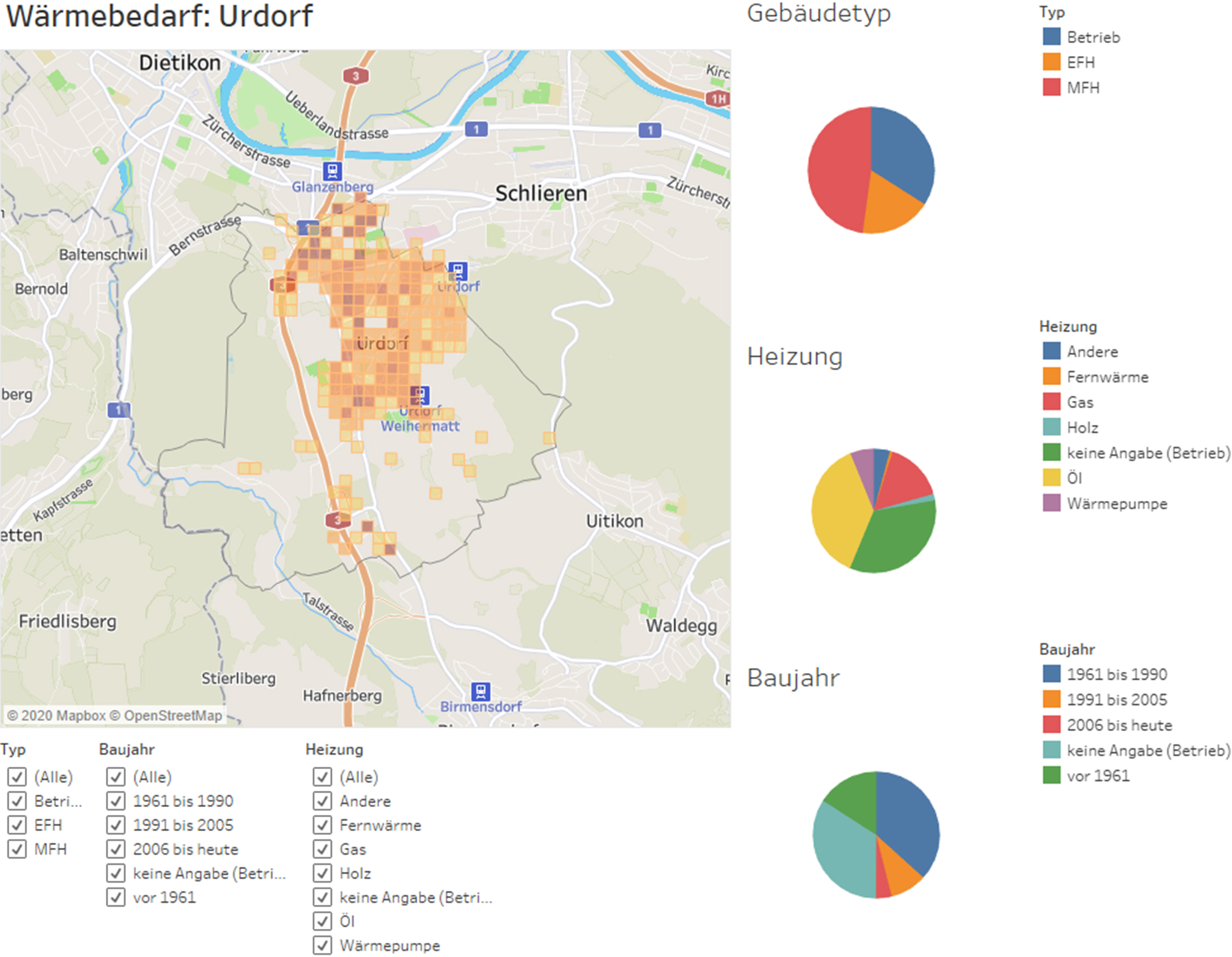Effective tool for interactive energy planning
The future energy supply is facing major challenges. An important part of the solution is spatial energy planning. That is why EBP has developed a tool that supports and simplifies the entire process of energy planning.
In line with the Paris Climate Agreement, the Swiss Federal Council has vowed to achieve climate neutrality by 2050. In light of the urgency of this challenge and growing public concern, securing a sustainable energy supply of municipalities and regions is more relevant than ever. Spatial energy planning is an essential instrument for the necessary restructuring of our energy systems.
Energy planning reveals approaches for sustainable heating and cooling
Buildings account for a large share of energy consumption and carbon emissions in Switzerland. This is because a large percentage of heating systems in Switzerland use fossil fuels such as heating oil and natural gas. The development towards sustainable heating presents municipalities with major challenges. The possible heat supply is determined by existing infrastructures, geographic factors and many local stakeholders such as homeowners and energy suppliers. Moreover, the investment cycles of heating and cooling infrastructure tend to be very long, which means that far-sighted planning is crucial.
The aim of energy planning is to show the current situation of heating and cooling and to present viable approaches to achieving sustainable heating and cooling in the future. Working on behalf of the city of Bern, EBP has drawn up an energy development plan that outlines how the city’s heating-supply goals can be reached, an energy plan that defines the associated spatial considerations, and specific measures that need to be implemented to restructure the energy system.
Using the EBP tool to understand the challenges of a future-oriented heat supply
Assessing the current state of the heat supply represents an important starting point. In this analysis, the composition of the building stock is determined: the number, type and age of the buildings, the types of fuel that are used in specific areas to heat these buildings, and the demand for heating. Indeed, assessing the current state is a necessary prerequisite for identifying the most promising courses of action.
“The EBP tool quickly delivers reliable heating supply data”
“While our customers need a reliable basis for their planning efforts, they would prefer to concentrate on the development and implementation of specific measures,” says Michel Müller, EBP expert in the area of energy concepts and strategies. That’s why the EBP tool was designed to access current statistical data for all of Switzerland as a means of facilitating energy planning. The data in question are based on SynPop, a synthetic population that EBP has generated for Switzerland. The advantage of the EBP tool is that it gives its users immediate access to reliable information on the existing buildings and heat supply in any given area, essentially guaranteeing that they’ll have much more time to devise and implement appropriate measures. The tool also permits extensive spatial assessments and gives municipal representatives and other stakeholders the means of evaluating the data according to specific user-defined regions.

Using the EBP tool to seize the opportunities of sustainable energy-supply solutions
Various sources of renewable energy can be used to reduce our current dependence on fossil fuels such as heating oil and natural gas. These include waste heat, environmental heat, biogas and solar energy, etc. Effective energy planning shows where which energy sources can be used most sensibly and how existing potentials can best be used. This result is best achieved in cooperation with all important stakeholders. Indeed, experience shows that doing so provides an important basis for a successful conversion of the heat supply.
“Identifying optimal ways of achieving sustainable heating”
The EBP tool permits interactive energy planning. Users can immediately assess the impact that prospective measures can be expected to have on heat demand, the composition of energy sources and carbon emissions. Energy planners can conveniently use it to develop their own measures, for instance, by checking the impact associated with various scenarios. This makes it easier to identify optimal measures on the road to achieving sustainable heating supply solutions.
More information on the EBP tool
EBP has already achieved excellent results with its energy planning tool, deploying it, for instance, to support energy planning processes in the Swiss municipality of Urdorf and to assist in the coordination of the heat supply in the region of ”ZürichseeLinth”. Are you also interested in sustainable heating supply solutions for your community? Then please contact us at any time.

Michel Müller
michel.mueller@ebp.ch

Sabine Perch-Nielsen
sabine.perch-nielsen@ebp.ch

Sarah Schöni
sarah.schoeni@ebp.ch